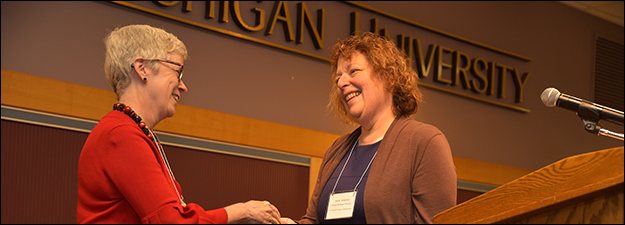Teaching Early Middle English (A Roundtable)
Sponsoring Organization(s)
Early Middle English Society
Organizer Name
Dorothy Kim
Organizer Affiliation
Vassar College
Presider Name
Scott Kleinman
Presider Affiliation
California State Univ.-Northridge
Paper Title 1
Discussant
Presenter 1 Name
Carla María Thomas
Presenter 1 Affiliation
New York Univ.
Paper Title 2
Discussant
Presenter 2 Name
Leslie Carpenter
Presenter 2 Affiliation
Fordham Univ.
Paper Title 3
Discussant
Presenter 3 Name
Elizabeth Canon
Presenter 3 Affiliation
Missouri Western State Univ.
Paper Title 4
Discussant
Presenter 4 Name
Meg Worley
Presenter 4 Affiliation
Colgate Univ.
Start Date
12-5-2017 3:30 PM
Session Location
Schneider 1325
Description
racketed by the Norman Conquest in the eleventh century and the decline of the English populace as a result of the Plague (1348-1450), the Early Middle English period is characterized by its multilingualism and its interaction with cultural developments from Ireland to the Middle East. In addition to four main literary languages (Latin, French, English, Welsh), Britain was also home to speakers and scholars of Greek, Hebrew, Irish, Old Norse, Arabic, and Dutch. Because many educated thinkers could deploy three or more of these languages, Britain’s literary climate was rich in cross-linguistic dialogue. This is a literary world very different from standard views of medieval England; as new scholarship is revealing, this world was multilingual, culturally diverse, intellectually and aesthetically experimental. We can soon anticipate a thorough reassessment of the Early Middle English period and its significance in the history of English language and literature. However, how does one teach this material in both an undergraduate and graduate classroom since edited texts and especially teaching texts are scarce. Since so much of the material has last been edited in the 19th c. with no apparatus or glossary, much of the Early Middle English corpus has become the purview of specialists, particularly historical linguistics. This roundtable is a way to have a large discussion about how Early Middle English can be taught and the new developments in digital media (youtube, twitter, digital editions) that is bringing Early Middle English into the undergraduate and graduate classroom. What are the best approaches for successful pedagogy?
Dorothy Kim
Teaching Early Middle English (A Roundtable)
Schneider 1325
racketed by the Norman Conquest in the eleventh century and the decline of the English populace as a result of the Plague (1348-1450), the Early Middle English period is characterized by its multilingualism and its interaction with cultural developments from Ireland to the Middle East. In addition to four main literary languages (Latin, French, English, Welsh), Britain was also home to speakers and scholars of Greek, Hebrew, Irish, Old Norse, Arabic, and Dutch. Because many educated thinkers could deploy three or more of these languages, Britain’s literary climate was rich in cross-linguistic dialogue. This is a literary world very different from standard views of medieval England; as new scholarship is revealing, this world was multilingual, culturally diverse, intellectually and aesthetically experimental. We can soon anticipate a thorough reassessment of the Early Middle English period and its significance in the history of English language and literature. However, how does one teach this material in both an undergraduate and graduate classroom since edited texts and especially teaching texts are scarce. Since so much of the material has last been edited in the 19th c. with no apparatus or glossary, much of the Early Middle English corpus has become the purview of specialists, particularly historical linguistics. This roundtable is a way to have a large discussion about how Early Middle English can be taught and the new developments in digital media (youtube, twitter, digital editions) that is bringing Early Middle English into the undergraduate and graduate classroom. What are the best approaches for successful pedagogy?
Dorothy Kim

